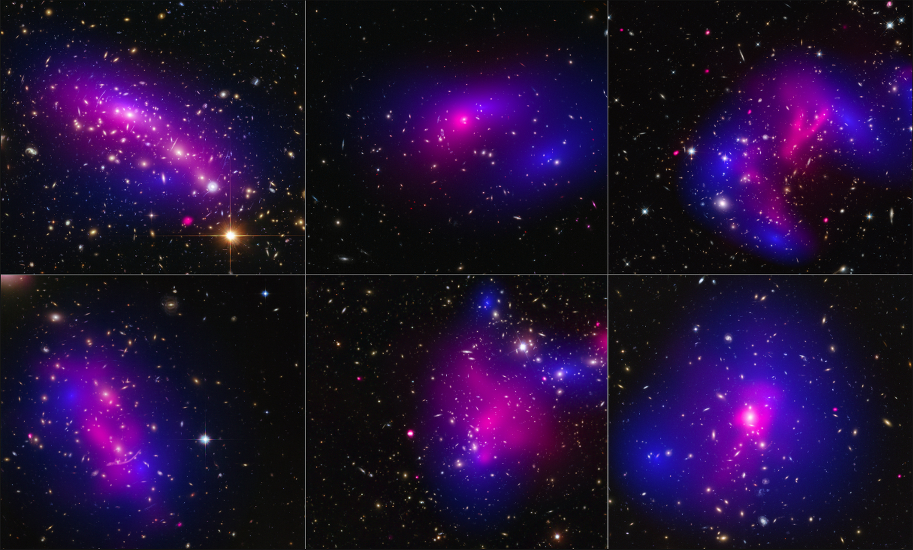
 Credit: NASA and ESA
Credit: NASA and ESA
Super Colliders
Physicists study the properties of matter by smashing pieces of it into other pieces and seeing what flies off. These types of studies use matter smashers like Fermilab or the Large Hadron Collider to acclelerate sub-atomic particles to extremely high energies. "Dark matter", the stuff that makes up the vast bulk of the material Universe, is more difficult to study, since it only interacts by gravity, and does not emit any electromagnetic radiation. To study the properties of dark matter, astronomers are trying to use nature's largest matter-smashers, extremely high energy collisions between clusters of galaxies. Clusters of galaxies are the largest physical structures held together by gravity, and consist of galaxies, intracluster gas, and dark matter. Suprisingly, most of the normal matter in galaxy clusters resides in gas which lies between the galaxies in the cluster, and, because this gas is heated by the motions of the galaxies within the cluster, this gas glows brightly in X-rays. The amount and distribution of dark matter in a cluster can only be determined indirectly. As Einstein showed, mass distorts space-time, so that the dark matter in a cluster of galaxy will distort the shapes of background galaxies, an effect called "gravitational lensing". Astronomers have now finished the most detailed X-ray and gravitational lensing study of dark and normal matter in galaxy collisions. The images above show a sample of six colliding clusters jointly studied by the Hubble Space Telescope and the Chandra X-ray Observatory. The Hubble images measure the amount of gravitational lensing produced by the cluster, which determines the dark matter distribution. The derived distribution is show in blue in the images above. The hot, X-ray producing normal matter contained in the intercluster gas, is measured by from its X-ray emission by the Chandra observations, and is shown in pink. As seen in similar pioneering studies of the Bullet Cluster and the El Gordo cluster, the dark matter extends farther than the hot normal matter, indicating that, while the normal matter is slowed down by the enormous collisions of these clusters, the dark matter is not.
Published: April 6, 2015
<
HEA Dictionary ● Archive
● Search HEAPOW
● Other Languages
● HEAPOW on Facebook
● Download all Images
● Education ● HEAD
>

Each week the HEASARC
brings you new, exciting and beautiful images from X-ray and Gamma ray
astronomy. Check back each week and be sure to check out the HEAPOW archive!
Page Author: Dr. Michael F. Corcoran
Last modified Monday, 26-Feb-2024 17:34:55 EST


